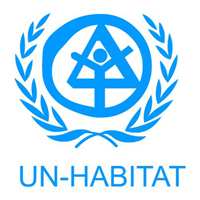Land Grabbing by Israeli Settlers in the Occupied West Bank Through Grazing
Kerem Navot and Peace Now have published a joint report revealing how a small group of violent settlers, with support from the Israeli government, have taken control of 14% of the West Bank by establishing over 100 shepherding outposts, effectively driving out the Palestinians from these areas. The report highlights how the government enables these settlers through large-scale land allocations and millions of shekels in funding.
Summary:
Part One: Seizing Control of Hundreds of Thousands of Dunams Through Shepherding Outposts
This new report by Kerem Navot and Peace Now reveals that Israeli settlers have used shepherding outposts to seize at least 786,000 dunams of land (4.04 dunams are 1 acre) – equivalent to 14% of the West Bank’s total area.
Israeli settlers, with the backing of the Israeli government and military, employ three primary methods to seize land:
1. Establishing shepherding outposts and displacing Palestinian shepherds and farmers from their lands.
2. Harassing, intimidating, and violently targeting nearby Palestinian communities to force their expulsion.
3. Taking control of large areas of land from displaced Palestinian communities and setting up new outposts.
Through these methods, settlers have displaced more than 60 Palestinian shepherding communities and established at least 14 Israeli shepherding outposts on or near their former lands.
An analysis of the land seized by Israeli settlers shows that the majority are not classified as “state lands,” even under Israel’s own definitions, making up only 40% of the areas taken. Around 41% of the seized lands have been designated as “firing zones” by the Israeli military – restricted areas where civilians without permanent residency, including settlers, are officially banned from entering. Additionally, about 4.4% of the lands taken over by settlers through shepherding outposts are located within Areas A and B, under Palestinian Authority jurisdiction.
Land seized through shepherding outposts Dunams Percentage of total seized land Total 786,000 100.0%
Palestinian Authority areas (A, B, Agreed-Upon Reserve) 34,365 4.4%
Firing zones 324,000 41.2%
Settlement jurisdiction areas 101,400 12.9%
Private Palestinian lands* 281,500 35.8%
Lands declared as “state lands” 121,950 15.5%
State lands registered in the Israeli land registry 198,910 25.3%
Lands with no ownership information on Israeli Civil Administration maps. 134,127 17%
*Lands marked as private on Israeli Civil Administration maps, both registered and not registered.
Part Two: Grazing Land Allocation Contracts with Settlers
The Settlement Division of the World Zionist Organization (WZO), entrusted by the state with managing hundreds of thousands of dunams of land – without oversight and out of the public eye – has awarded “grazing contracts” to dozens of Israeli settlers. According to the State Attorney’s Office, the Settlement Division has allocated approximately 80,000 dunams of West Bank land to settlers for grazing purposes. These contracts enable settlers to take control of hundreds of thousands of dunams of land beyond the areas outlined in their agreements, while also securing financial and other state support – effectively bypassing the ban on state funding for activities officially considered illegal. Furthermore, these contracts allow settlers to enlist the help of Israeli military forces in expelling Palestinian shepherds and farmers from the lands they seek to claim.
This report reveals, for the first time, dozens of grazing contracts signed between the WZO’s Settlement Division and Israeli settlers. The contracts included in the report likely represent only about half of the total agreements that have been signed. The contracts we have obtained reveal the following key details:
- Thousands of dunams of land were allocated to dozens of settlers without a tender process and without compensation.
- Although the contracts specify “grazing” as the purpose of the land allocation, settlers have established illegal outposts on nearly all the allocated lands – without permits and in direct violation of the contract terms.
- The maps accompanying the contracts were carelessly and inaccurately drawn, suggesting a deliberate effort to allow settlers to take control of areas not officially allocated to them.
- There is no consistency between the land size stated in the agreements (in dunams) and the areas marked on the attached maps.
- Some contracts allocate land already assigned to other settlers under separate agreements for residential or agricultural purposes.
- Approximately 9,000 dunams of allocated land are private Palestinian lands, outside the Settlement Division’s jurisdiction, and cannot legally be allocated to settlers.
- Over 10,000 dunams of declared state lands allocated to settlers have not been reclassified by the Civil Administration’s Blue Line Team, contrary to Attorney General guidelines.
- More than 5,000 dunams allocated to settlers are located within military firing zones, where settlers are officially prohibited from entering.
- In one contract, the Settlement Division granted a settler approximately 1,060 dunams of land located within the Palestinian Authority’s jurisdiction (Area B).
As noted, these findings are based solely on the contracts we were able to obtain.
Part Three: Funding the Shepherding Outposts
The Israeli government’s backing of settler shepherding outposts, along with the displacement of Palestinian communities and land seizures, extends beyond military backing and large-scale land allocations by the Settlement Division. A complex financial system funnels tens of millions of shekels annually to these illegal outposts. Below are the primary channels through which we have traced this financial support:
NIS 54 Million for Shepherding Outposts “Security Needs”: Under the budget category “Security Needs for Settlement Points“, the Israeli government funds road paving, solar panels, electric gates, vehicles, drones, cameras, generators, and lighting poles.
NIS 30 Million Annually for “Patrolling Units”: Through the “Establishment and Operation of Patrolling Units” budget, the government finances salaries, equipment, vehicles, drones, aerial photography, and infrastructure projects, including road construction, fencing, camera installation, and electric gates.
Grants for “Agricultural Volunteering”: Millions of shekels are directed each year to organizations that operate volunteer programs in shepherding outposts in the West Bank.
Grazing Grants: From 2017 to 2024, the Ministry of Agriculture awarded approximately NIS 3 million in “grazing grants” to shepherding outposts, including NIS 2.6 million to Mevo Horon settlers who manage a cattle herd estimated to cover 9,000 dunams in the Canada Park area.
“Business Entrepreneurship” Grants by the Settlement Division: Shepherding outpost owners have received roughly NIS 1.6 million in business development grants, alongside loans of undisclosed amounts.
Millions Invested by Amana: The Israeli settlement organization Amana, sanctioned by the UK and the US for its role in supporting outposts linked to violence against Palestinians, has invested millions of shekels in establishing and maintaining these outposts, including providing loans and facilitating their construction.
KKL-JNF Funding: The Jewish National Fund has spent NIS 4.7 million in recent years on shepherding outposts, under the guise of funding volunteer programs supporting at-risk youth.
Government-Subsidized Private Donations: Shepherding outposts receive substantial funding from private donors through non-profit organizations that are recognized as charitable entities under Article 46A of the Israeli Income Tax Ordinance, making donations eligible for tax deductions.
Image: Cover of the new report. Source: Peace Now/Kerem Navot.














